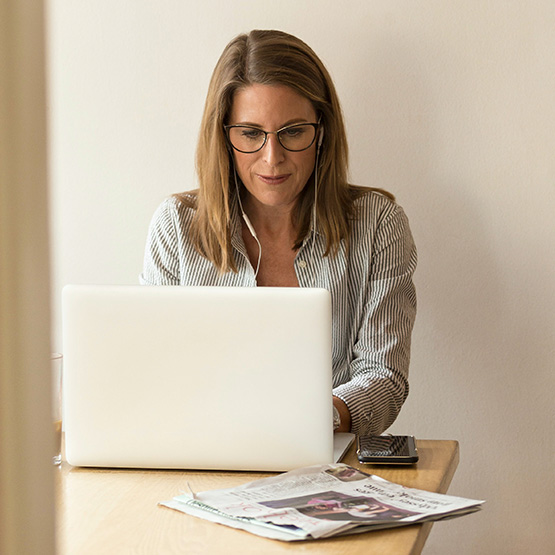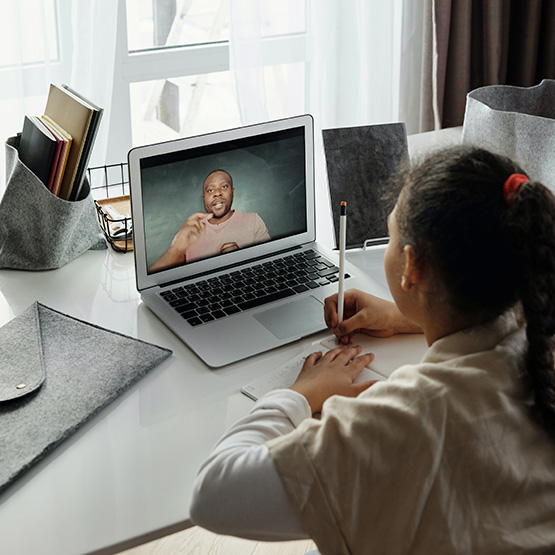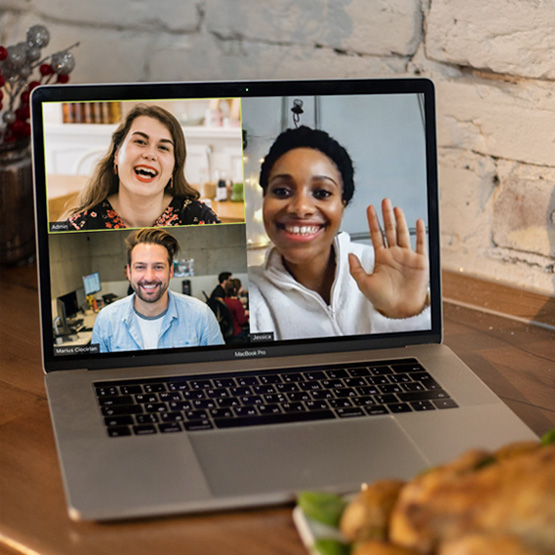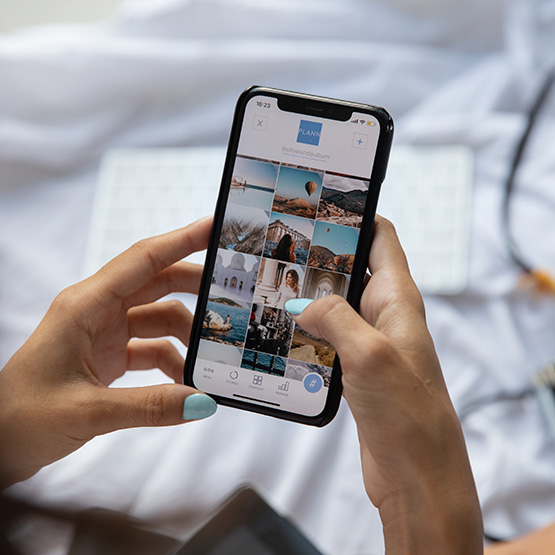Blue light: Trends and solutions in lockdown
Concerns about blue light have been growing in the optical field, especially over the course of the pandemic. In this article, we take a closer look at these issues and explore the options available to improve your visual comfort.
An epidemic of eye fatigue
With so many people working and studying from home due to lockdown measures, most of us are spending a lot more time looking at screens.
To better understand the symptoms related to blue light exposure and the clinical solutions available, our team talked to two Opto-Réseau professionals.
Dr. Anabelle Leclerc, optometrist and owner of the Vision Line Barnabé clinic in Montreal’s Rosemont district, and Martin Langlois, optician and owner of the Langlois Optician clinic in Quebec City’s Sainte-Foy neighbourhood, have both seen a big increase in the number of people with symptoms of eye strain coming in for eye exams.
|
|
|
|
Blue light is inescapable and affects all age groups
The trend since the start of the pandemic is clear: more and more patients are seeking help with symptoms related to screen use (blue light exposure) or improper workstation ergonomics (inadequate ambient light, screen position, etc.).
In concrete terms, the effects of blue light exposure include everything related to asthenopia (eyestrain) and dry eyes. Symptoms may include fatigue (eyes that feel heavy) or headaches.. Eyestrain symptoms may also include accommodative issues (problems focusing as the day goes by) as well occasional blurry or double vision.
As Dr. Leclerc points out, we can’t get away from blue light. We’re exposed to it through televisions, computers, tablets, smartphones, electronic devices, and interactive smartboards at school, not to mention certain types of lighting such as LED).
Not only are we spending more time in front of our screens for work and school, but with the lockdown, we’re also using them more for leisure.
To drive the point home, Dr. Leclerc says that most of her patients are reporting that their daily screen time has increased— and in some cases doubled—whether it’s for work, school, virtual get-togethers, or simply entertainment while we’re all stuck inside.
How is blue light harmful?
It’s important to point out that blue light isn’t harmful to your visual comfort. Blue light is a spectrum. Part of the spectrum can cause symptoms like eye fatigue and dry eye. But another part of the spectrum is not harmful, and is actually important to your overall health, especially because it affects your circadian rhythms (sleep cycle, hormone secretion, etc.)
When the first blue light eyewear treatments were introduced some years ago, industry professionals quickly realized that they were too broad. The first treatments filtered out too much of the spectrum and affected the sleep cycle, because they prevented users from getting enough of the beneficial blue light they needed.
At Opto-Réseau, our professionals work with well-known suppliers like Zeiss, which produce state-of-the-art eyewear and perform extensive testing to ensure their products perform properly. Thanks to their strict processes, we can provide our patients with solutions that deliver optimal protection against harmful blue-violet light while letting through the beneficial portion of the blue light spectrum.

Beware of online suppliers
Yellow lenses: Another trap to avoid Blue light treatments give lenses a slightly yellowish tint. Today, thanks to ongoing improvements in lenses and treatments, this yellowing effect is virtually invisible.
However, with the rise of online shopping and the lack of controls in place for online eyewear sales, Dr. Leclerc says that some consumers who thought they were ordering lenses with blue light treatment ended up receiving yellow tinted lenses instead.
But yellow tinting isn’t enough to filter out blue light. It’s the treatment, not the colour, that provides the protection. So remember, having yellow-tinted lenses doesn’t mean your eyes are protected against harmful blue light.
How to control or reduce the effects of blue light
Prescription lenses and blue light treatments
Once recommended primarily for office workers spending a lot of time in front of a computer screen, blue light treatments have grown increasingly popular. But with the changes wrought by the pandemic, the majority of clients at our clinics are now seeking relief from eyestrain caused by blue light.
Blue light treatments have also grown increasingly affordable. In fact, the price of an antireflective coating with blue light protection is now nearly the same, or in some cases equivalent, to a good quality standard antireflective coating, as is the case with Zeiss DuraVisionTM BlueProtect.
For optimal visual comfort, talk to your eye care professional about available treatments that include blue light protection the next time you choose a pair of prescription lenses.
Blue light and contact lenses
Until recently, blue light treatment wasn’t available for contact lenses. But the introduction of AcuvueTM OASYS with TransitionsTM has changed all that.
As optician Martin Langlois points out, a lot of people don’t realize that they can now get contact lenses with a blue light filter.
Initially, these lenses, the first certified to filter blue light, were designed to meet the needs of people with sun-sensitive eyes who wanted to enjoy the benefits of photochromic lenses.
Like TransitionsTM photochromic lenses, AcuvueTM OASYS with TransitionsTM lenses self-adjust to the ambient light.
These lenses offer the highest level of UV protection available in contact lenses, which makes them a popular choice for people who are constantly going indoors and out, whether for work or leisure.
For more information on ACUVUETM OASYS with TransitionsTM contact lenses and the available options for protection your eyes from blue-violet let, talk to an eye care professional at your Opto-Réseau clinic.
We’d like to thank Dr. Anabelle Leclerc, optometrist, and Martin Langlois, optician, for their invaluable collaboration in preparing this article.
- Blue light
- Ergonomic
- Eyestrain
- Light sensibility
- Redness
- Screens







